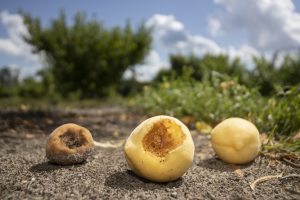Hello Avid Readers! Have you ever made a pesticide application and seen poor results? This has happened to many of us working in pest management and there are several reasons why this may have occurred. If you want to know “Why didn’t my pesticide work?” read more for some potential reasons why.
Pesticide Use
Working in pest management means we use various tools to keep pests below tolerable levels. It is important to take advantage of all appropriate pest strategies in an environmentally friendly and common sense approach. This is often referred to as Integrated Pest Management (IPM). When basing your pest control strategy on the concepts of IPM, pesticides should be used judiciously . This doesn’t mean that they won’t be used at all, or only as a last resort, but that they will be used in combination with other techniques and according to the label. There is a lot of information available on setting up IPM programs in Florida here. https://ipm.ifas.ufl.edu/
Why Didn’t My Pesticide Work

If you have come to the point in your IPM strategy where you have made a pesticide application and it did not resolve the problem there are several things you can check to see where things may have gone wrong.
- Improper pest identification
- Check the pest to ensure it is what you thought it was.
- Incorrect pesticide dosage
- Check the label for rates and ensure you mixed properly. Check your math!
- Pesticide does not target pest (bad product selection)
- While the pest does not need to be on the label to be legally used it may help to know the product has been tested on that organism
- Unfavorable environmental conditions
- Did you apply during rain? Excessive heat? Did the product drift off the target site?
- Poor pesticide condition/quality
- Was the product stored in a hot garage? Make sure the product is not expired
- Pesticide resistance
- It is possible the pest is resistant to the product. Read more about how this occurs below.
Pesticide Resistance
Pesticide resistance occurs when a dosage no longer controls the pest the way it previously has. For example, if an herbicide has previously managed a specific insect population, but is no longer effective after repeated use, there may be resistance to that pesticide. This may occur due to natural and beneficial mutations in the pest population. It is natural that individuals in a population will be produced that are slightly different from the rest. This is called a mutation. Sometimes, these mutations allow an individual pest to be resistant to a pesticide. If this happens, the resistant individuals will survive and reproduce. When they do their offspring will be resistant and the other individuals that are susceptible will die off. This results in a population of mostly resistant individuals.

Mode of Action
The “mode of action” (MoA) is how, on a molecular and physiological level, the active ingredient kills the pest. Therefore, the active ingredient and MoA are not the same thing. For example, permethrin is an active ingredient in some insecticides. This means that permethrin is the component of the pesticide formula that kills the target insect. Inside the insect, permethrin works by closing the insect’s voltage-gated sodium channels. This is the MoA, or how it works.
The most obvious tool available to avoid pesticide resistance is to avoid using the same MoA repeatedly without some alternative control strategy. Using another pest control strategy, such as mechanical control, biological control, or any of the other strategies of a robust integrated pest management program will help to prevent populations from becoming resistant. Additionally, the use of a different MoA, one that targets a different life process, would also prevent the “resistant” trait from thriving. Being able to quickly identify alternate strategies and alternate MoAs is essential to resistance management.
Summary
If your pesticide application did not have the intended effect on the pest check through the list above. Hopefully you can identify where the strategy or application went wrong. If you believe you have encountered a situation where there may be pesticide resistance you can do a couple of things. First, change your mode of action. Second, reach out to your UF/IFAS specialists or county Extension agents and let them know what you are encountering. If this is a new incidence we’ll want to record it.
References
“Pesticide Mode of Action Classification: Understanding Resistance Action Committees (RACs)”
Click To Subscribe
 3
3
